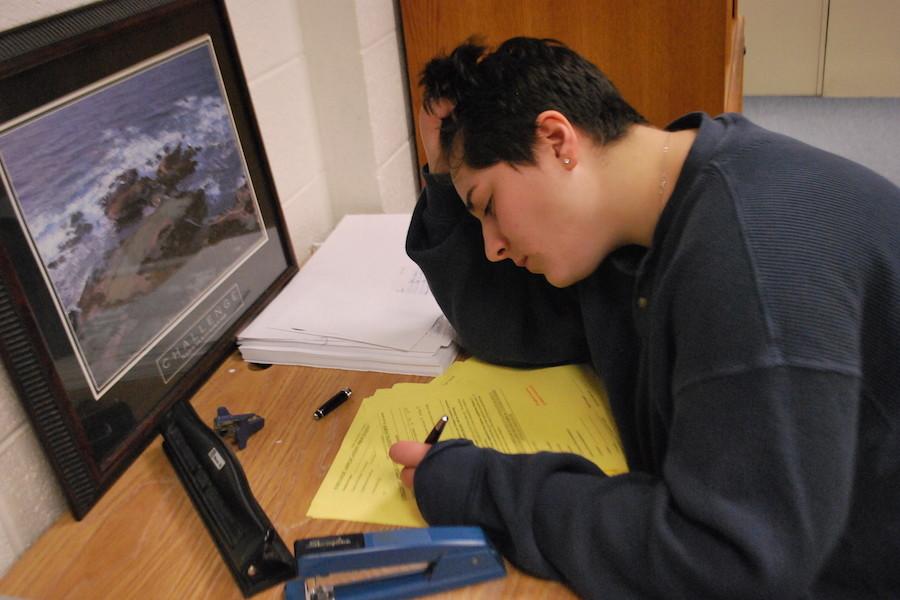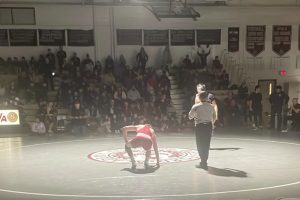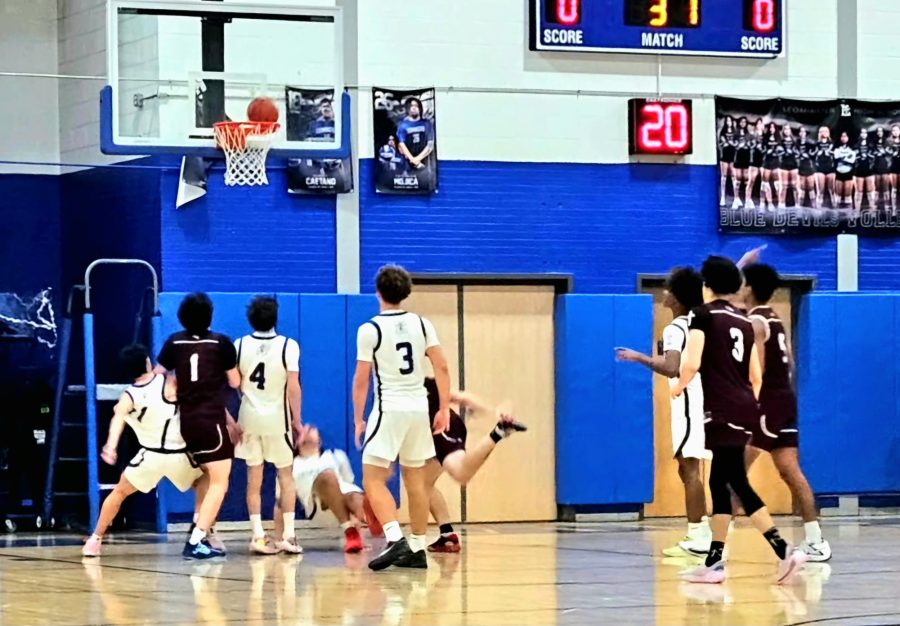Stress plaguing WA prompts schedule proposal
December 23, 2015
High school itself can add a load of stress for students, whether it be academically, socially or even issues at home. The early mornings, the late nights, the hours and hours of homework; it takes a toll on students. However, the newly proposed schedule aims to cut down on this student stress.
“A lot of our data [..] ha[s] said that the balance of stress in this high school is starting to get a little out of whack, so we’re looking at potential things to help get that balance back in check,” said Sean OLeary, Westford Public School’s Health and Wellness Coordinator.
This new schedule will have of a ten minute break after the second block of the day for students, as mentioned by Principal Jim Antonelli. O’Leary believes that the break will allow students to find time during the day to clear their minds, whether students do this by printing a paper, or simply talking to friends.
“The accumulation of having a spot in the day where you can take a deep breath, I think is good for kids,” said O’Leary.
For teachers, O’Leary thinks that it can also serve as a time for them to prepare for their next class. Whether that be making copies, or moving from one room to another, O’Leary believes the staff will also be able to benefit from the new schedule.
“Teachers are not a lot different than kids,” said O’Leary. “They have lives in the building, they have lives out of the building.”
According to the Youth Risk Survey administered to WA by Emerson Hospital, the majority of student stress emits from mostly from juniors and sophomores. However, there are still plenty of students from both the senior and freshman classes who also experience stress. As for the school as a whole, about 58% of the students at WA deal with “somewhat or very high stress” according to the Youth Risk Survey. Stress factors for students can come from academics, social issues, or from issues at home.
O’Leary says that the survey administered in the spring showed that the junior class stands out compared to the rest of the school. 68% of the junior class reported “somewhat or very high academic stress in their lives” on the survey. The remainder of the statistics showed sophomore year as the second highest year with academic stress, with seniors in third and freshmen rounding out the bottom.
O’Leary also believes that the reason the junior class is the most stressed out of all WA students is because of the more challenging school work as well as the beginning of the college process.
“We know two things about junior year. One, it’s a heavy academic year, [students] get some heavy duty work. Two, it means the most. It’s the year that gets [students] into where [they] want to go to school,” said O’Leary.
O’Leary said that this information is important for teachers to be aware of, since you cannot always tell who is and isn’t stressed within the WA community. He said this can be beneficial for students and staff if this information is made public to WA faculty.
In the end, O’Leary thinks that this schedule will be good for students who feel they need to decompress from school during the day.
“We have really high academic expectations here. We have high expectations for our students and our staff across the board. The goal is finding some balance,” said O’Leary.







